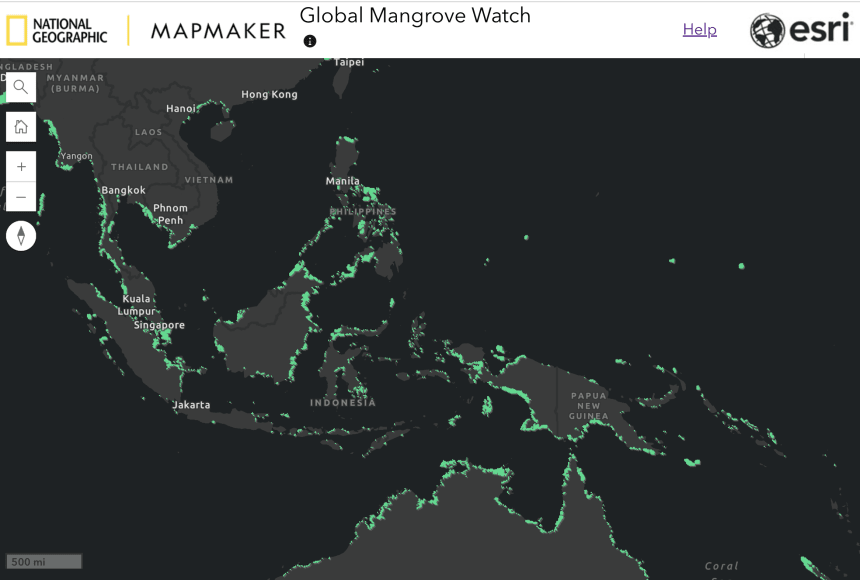Mangroves are a group of tree and bush species that thrive in coastal intertidal zones, or the area between high and low tide. Because they prefer warm-water ecosystems, they are most commonly found at tropical and subtropical latitudes around the world. They are halophytes, or salt-tolerant, and adapted to live in low-oxygen saline or brackish water. They are easily recognizable due to their tangle of prop roots, which keep their leafy branches above the water as the cycle of tides changes the water level.
Though over 50—and possibly up to 110—species are considered mangroves, not all are from the genus Rhizophora. Some mangrove species are the result of convergent evolution, when unrelated species adapt to a harsh environment (like a high-salt, low-oxygen intertidal zone) by taking on similar characteristics (like a tangled prop root system). For this reason, extensive mangrove forests may contain only a handful of unique mangrove species—and even within a single forest, different types of mangroves each occupy distinct niches.
Mangroves are crucial to the health of coastal ecosystems. Their root systems protect the shoreline against erosion by reducing wave intensity and trapping sediments against the land. Mangrove forests are also effective at carbon sequestration, the process of removing carbon dioxide (a harmful greenhouse gas) from the atmosphere. Their labyrinth of roots is a popular hiding spot for fish and other marine life evading predators. They also shield coastal communities from tsunamis and storm surge.
Today, the largest mangrove forest in the world is the Sundarban forest along the coast of Bangladesh and India, spanning 10,000 square kilometers (almost 4,000 square miles). In the past fifty years, though, it is estimated that up to 35 percent of the world's mangrove forests have been lost. This is largely due to shrimp farming, where mangrove forests are cleared and replaced with artificial ponds for aquaculture practices, as well as other growing threats: unsustainable tourism activities; agricultural practices that cause mangrove removal or harmful runoff and pollution; and mangrove deforestation for coastal development or to gather charcoal and timber. These risks are exacerbated by climate change causing sea levels to rise, effectively drowning mangrove forests, and alterations to water chemistry, temperature, and other conditions, which put stress on the mangroves’ preferred growing conditions.
As threats to mangroves become better understood, organizations around the world have been created and joined together to protect these important ecosystems. The data in this map layer is from the Global Mangrove Alliance, a collaboration between Conservation International, The International Union for the Conservation of Nature, The Nature Conservancy, Wetlands International, and the World Wildlife Fund. Supported by grants from the National Geographic Society, Explorers Ben Somerville and Margaret Owuor use research, education, and storytelling to protect mangrove forests near their homes in the Caribbean and southeastern Kenya. The map layer shows mangrove forest extent around the world in 2016.
About 40 percent of people live near the coast, and 90 percent of tropical storms form within 20° of the Equator—the parts of the globe where mangrove forests flourish. You can use the Population Density and Longitudes and Latitudes layers to see how many people and mangroves live in these regions, and the Protected Areas layer to find the areas where special conservation plans exist to defend mangrove ecosystems!
